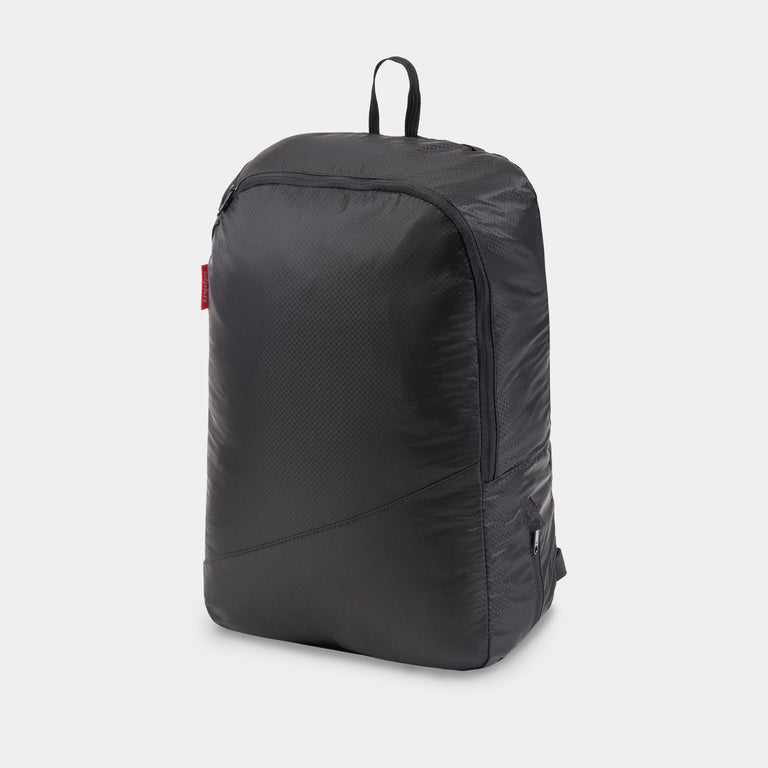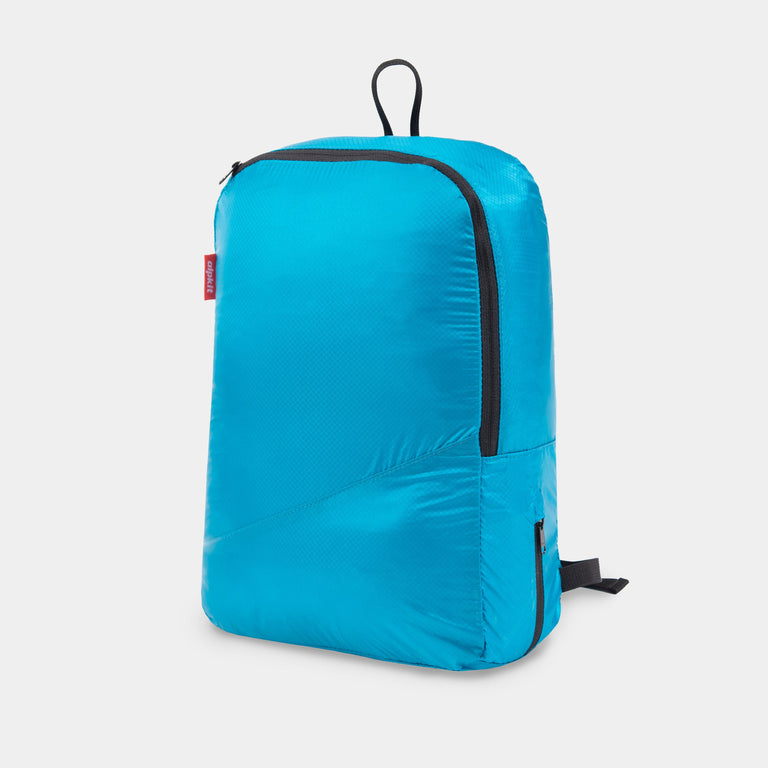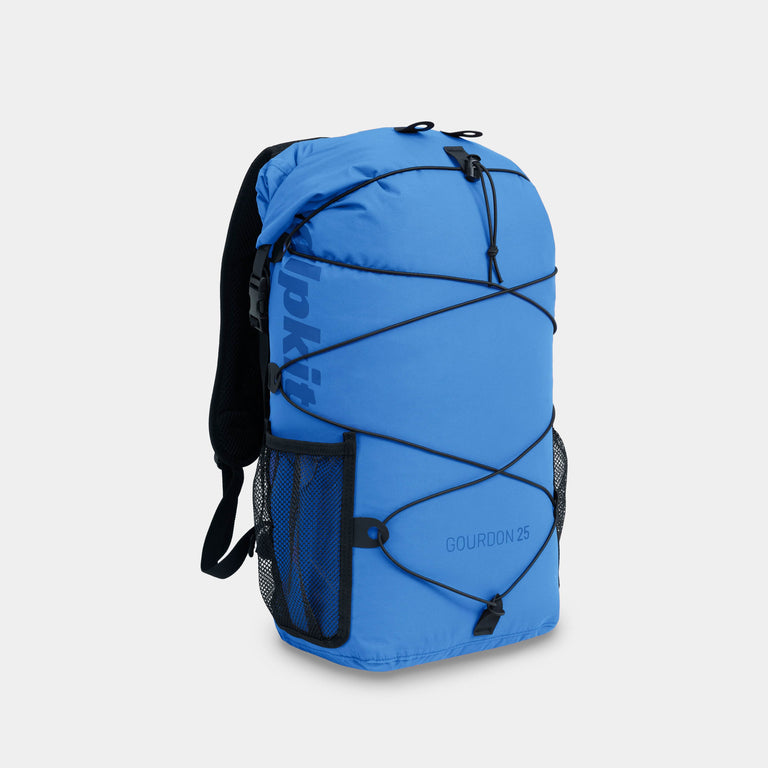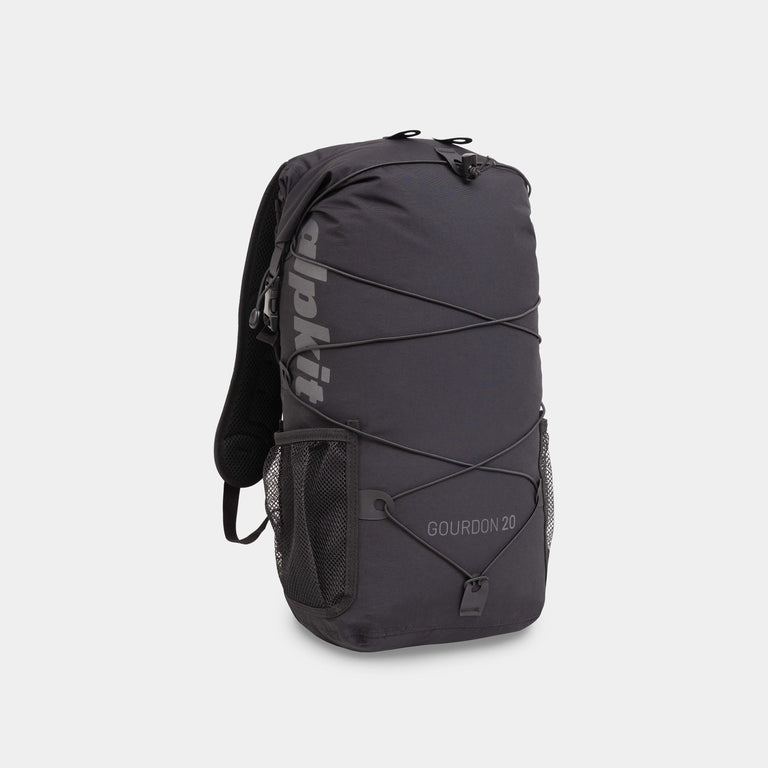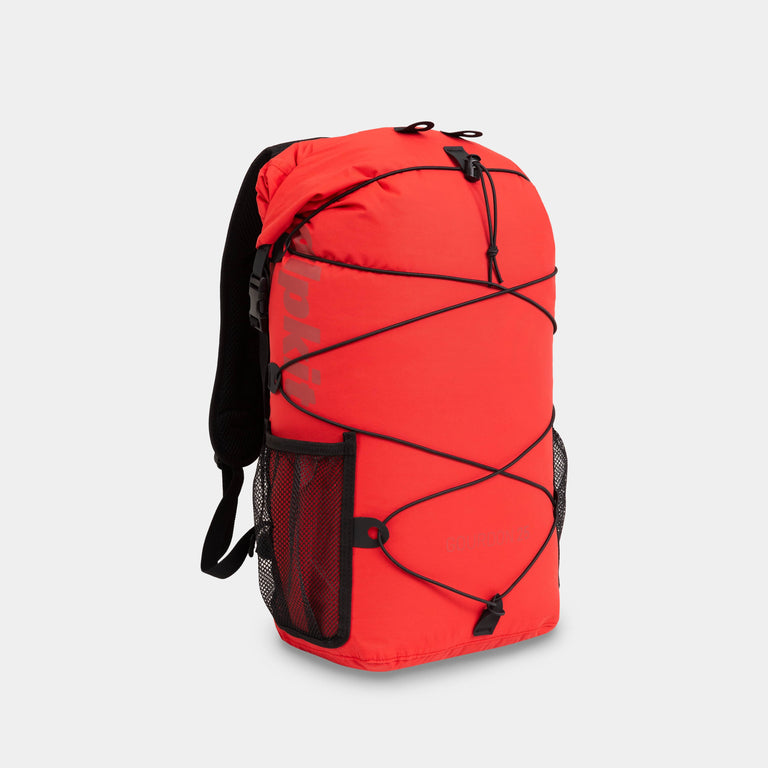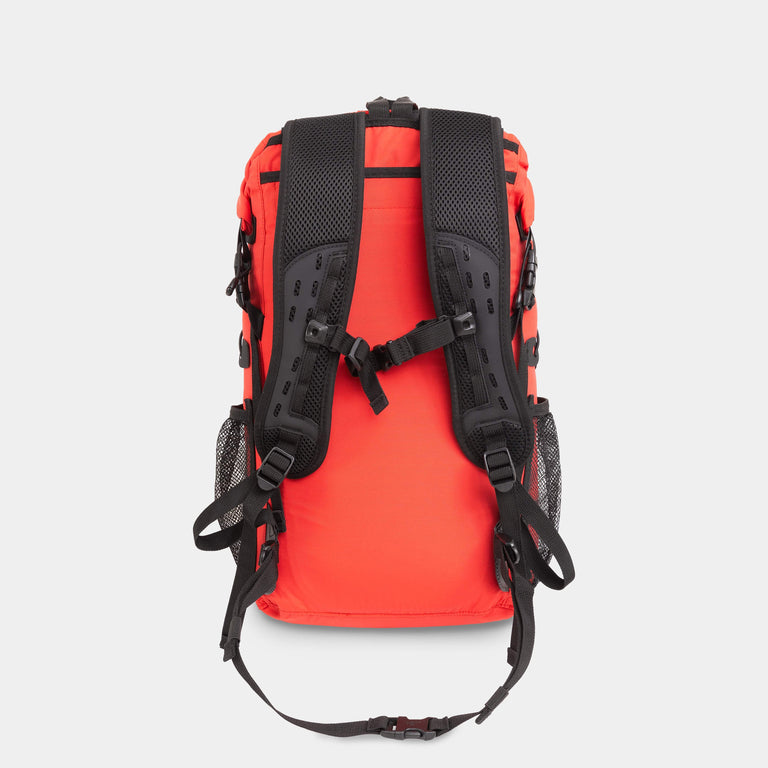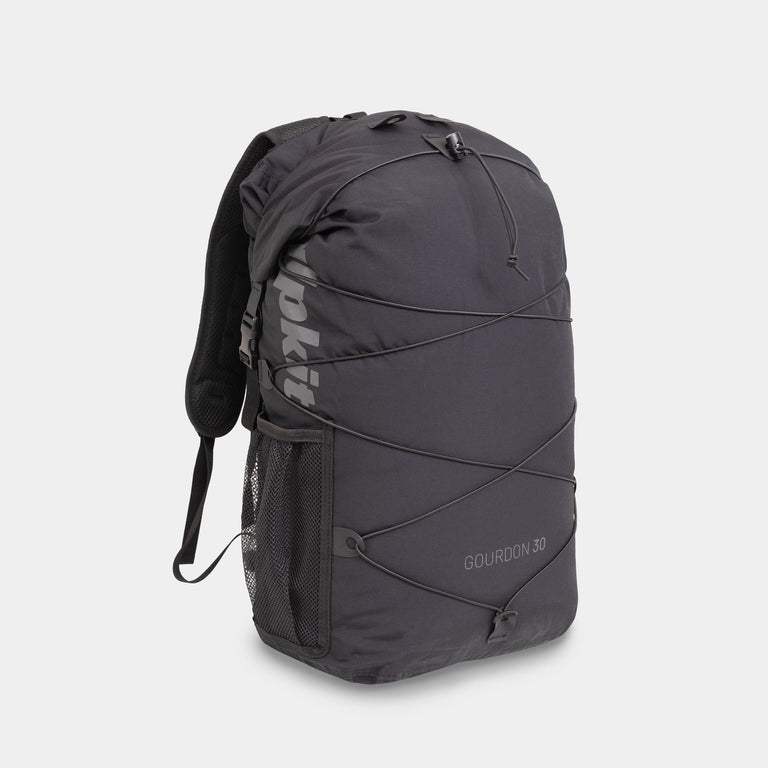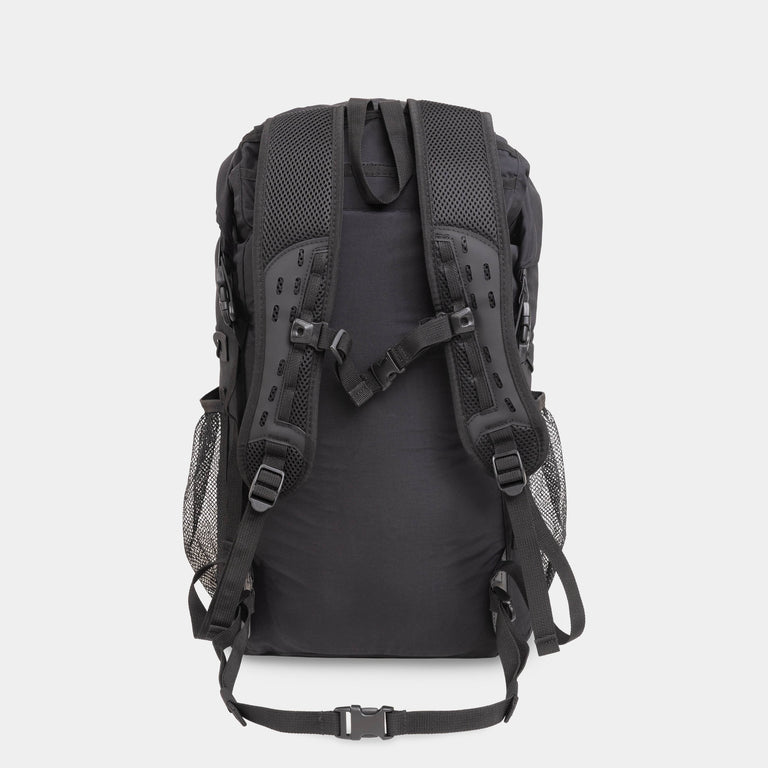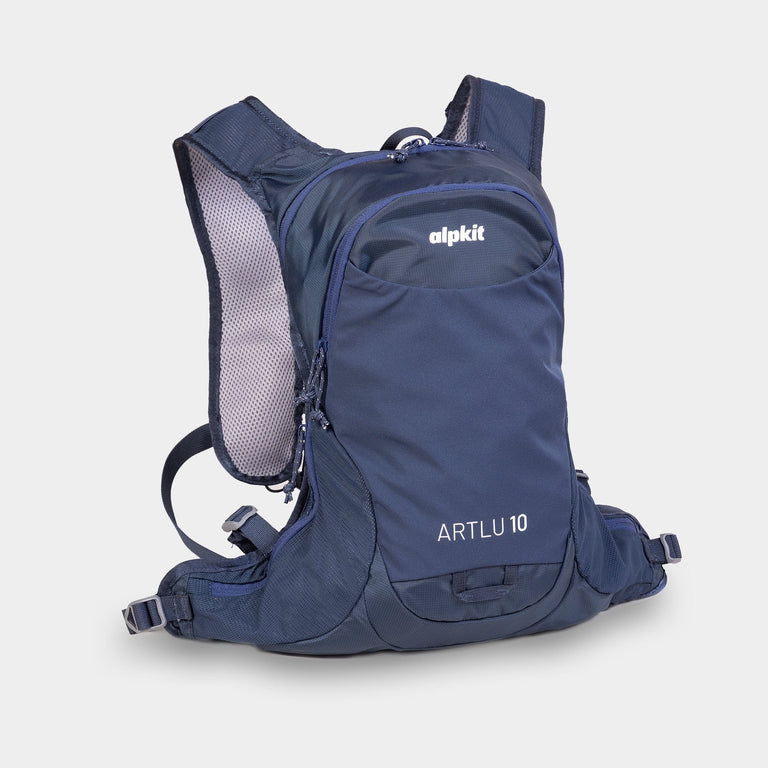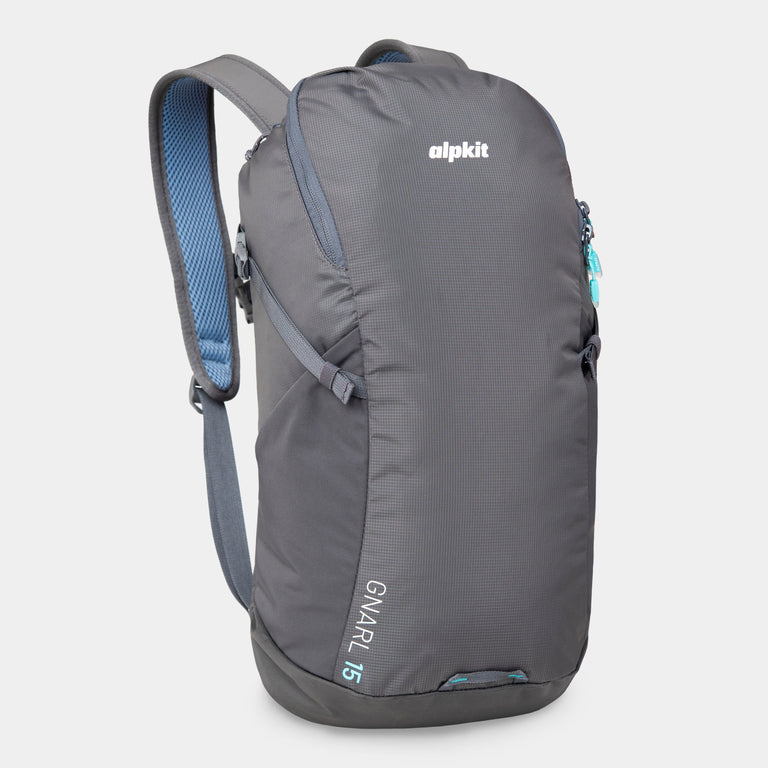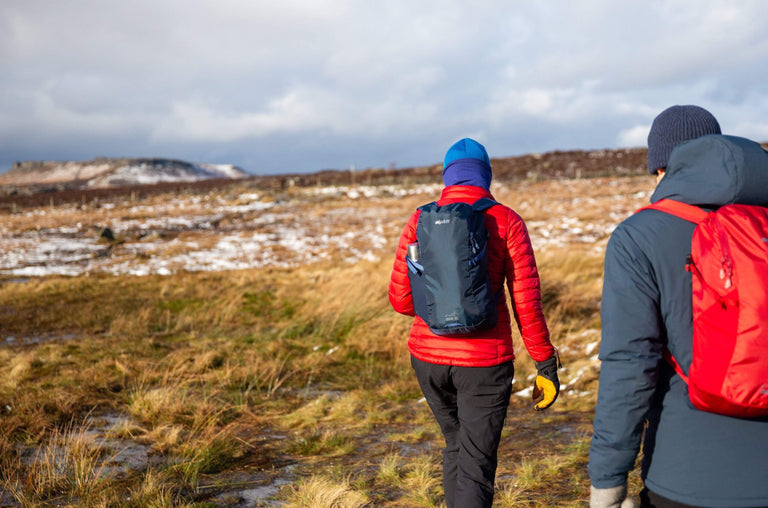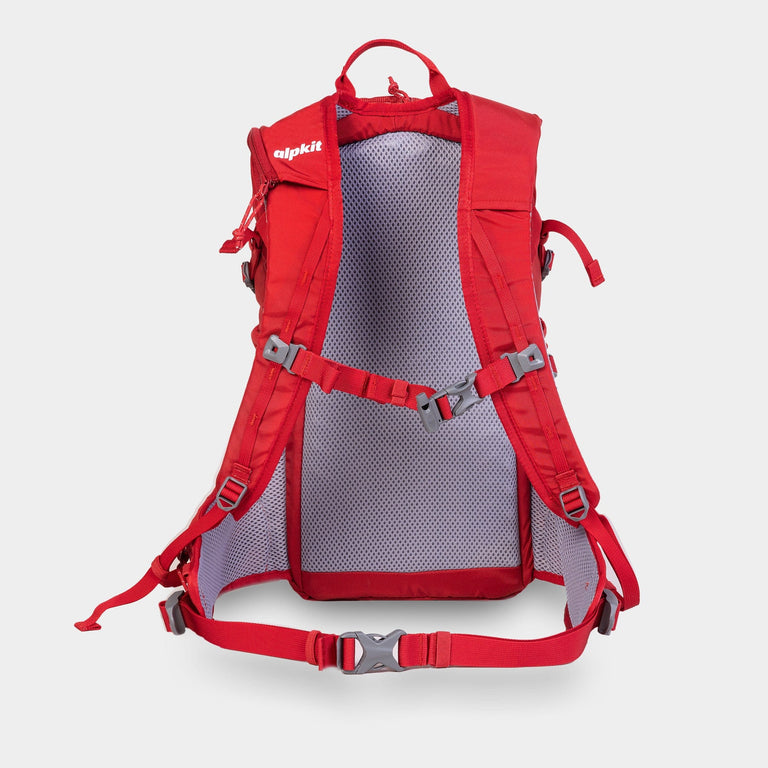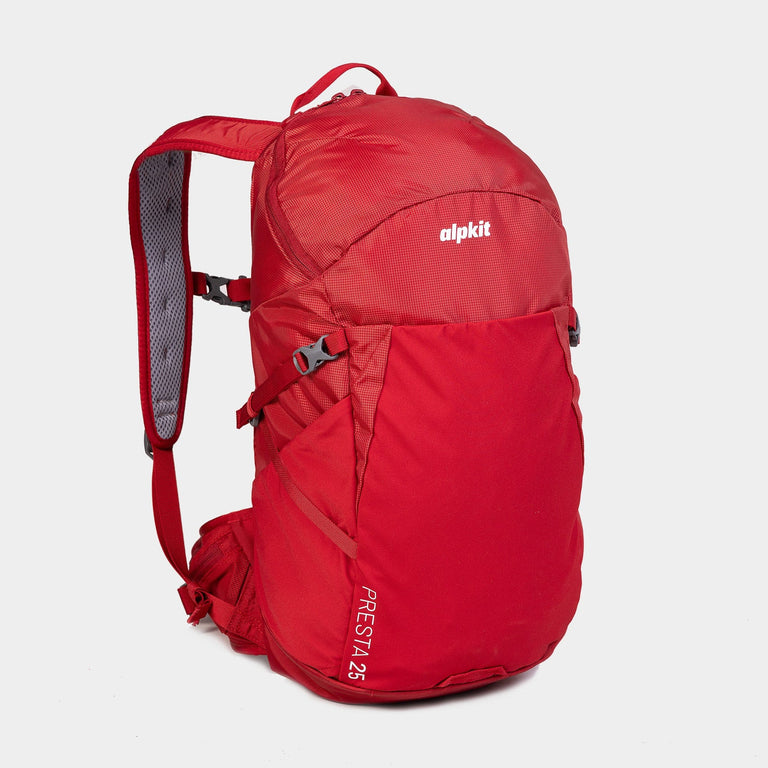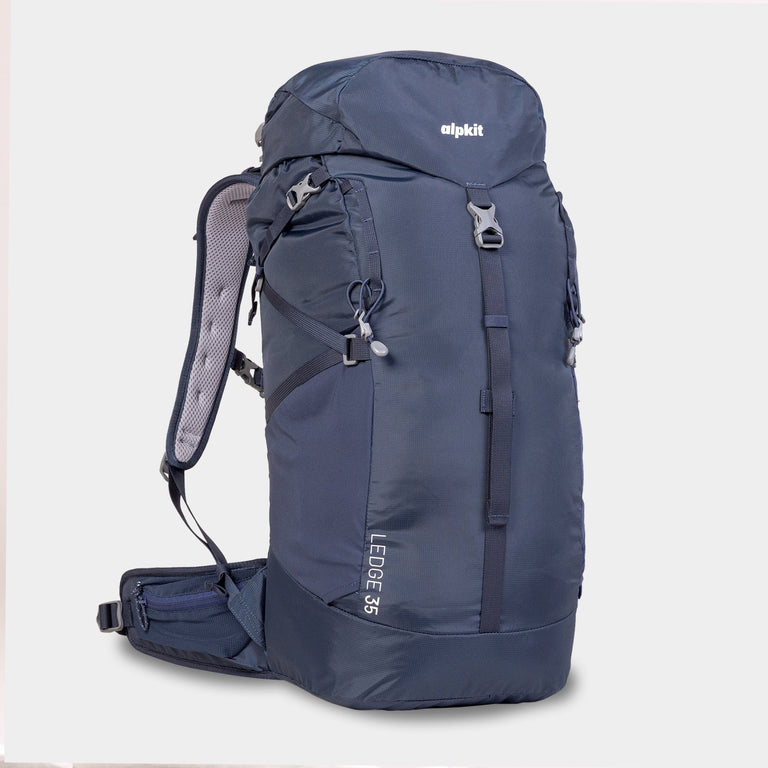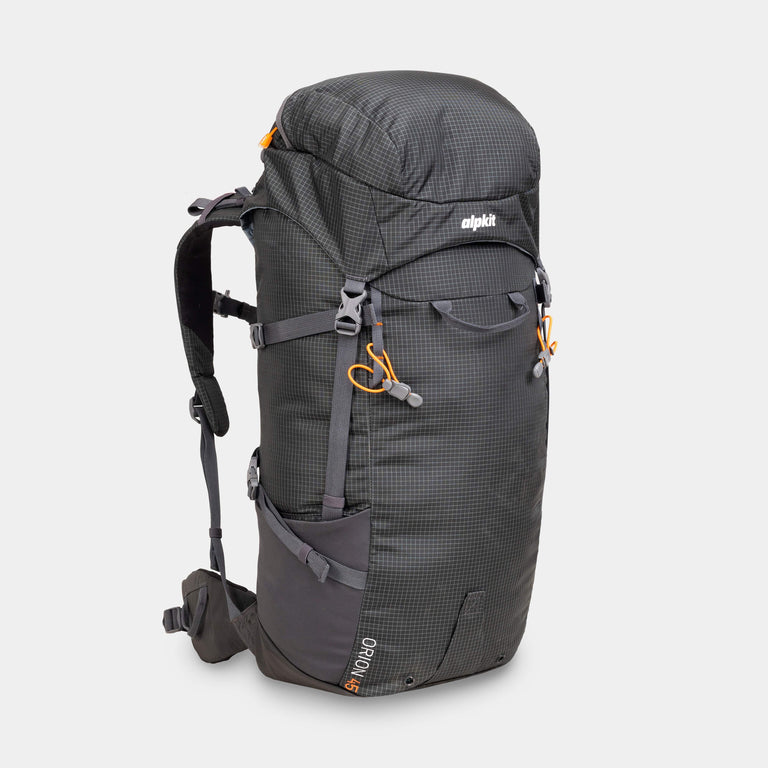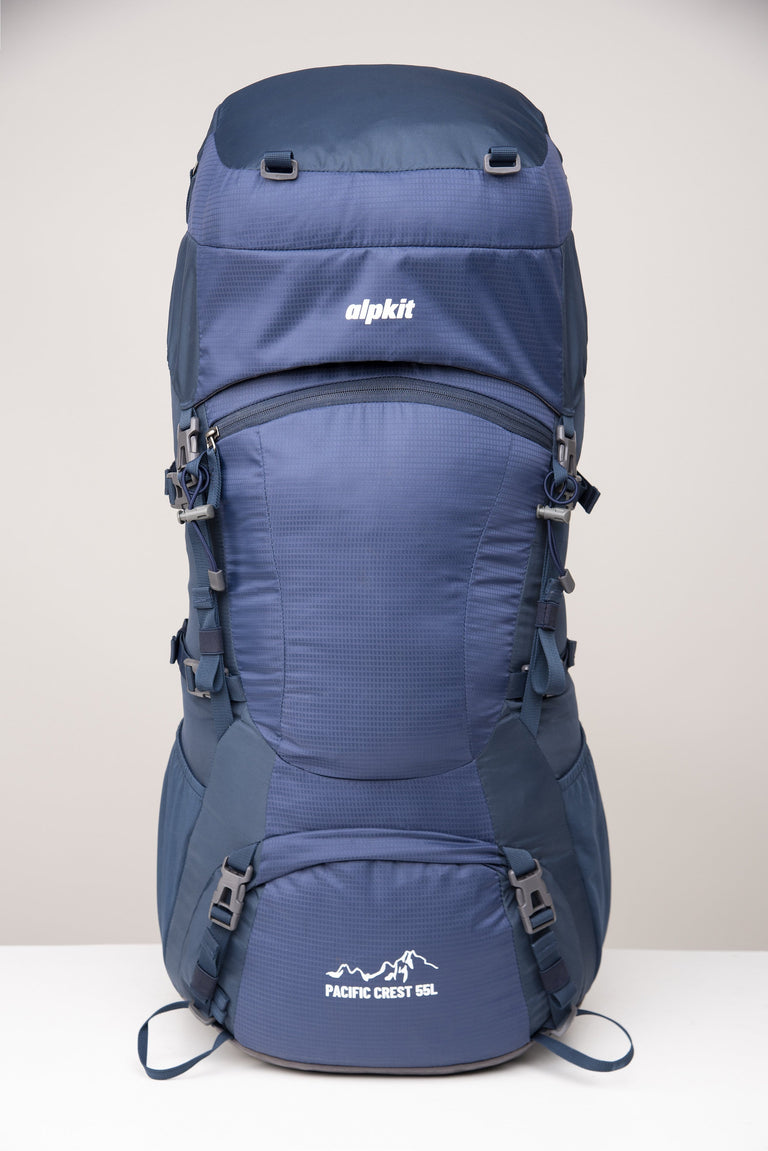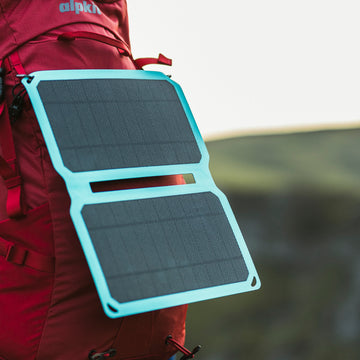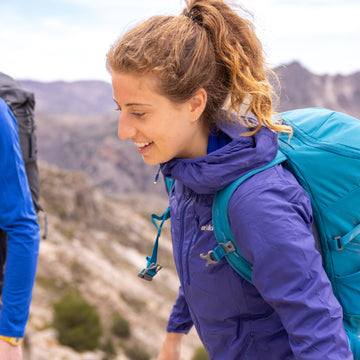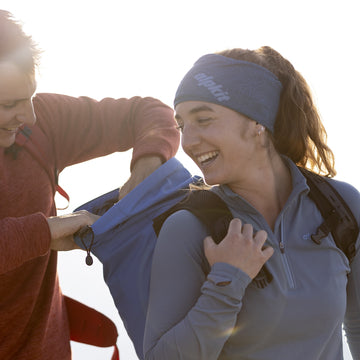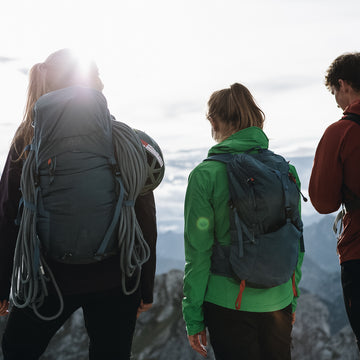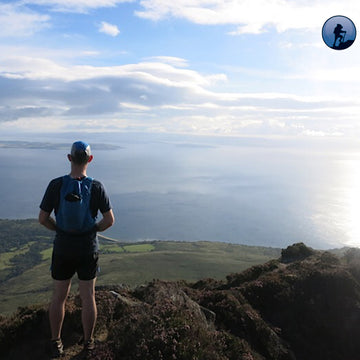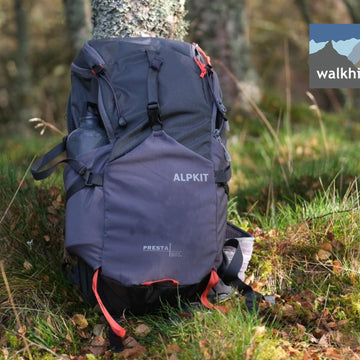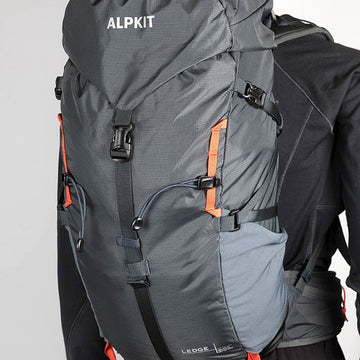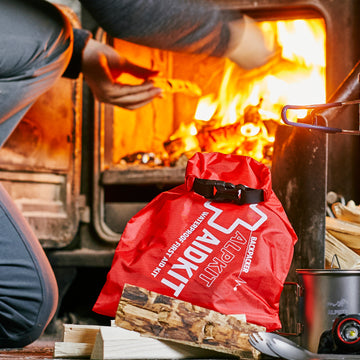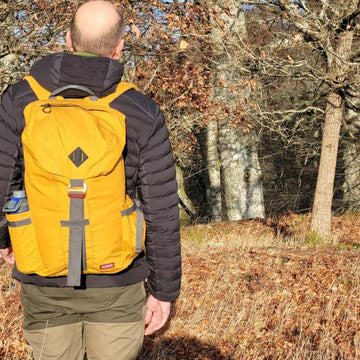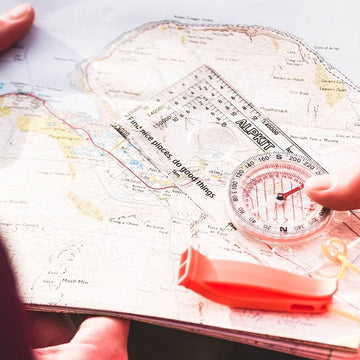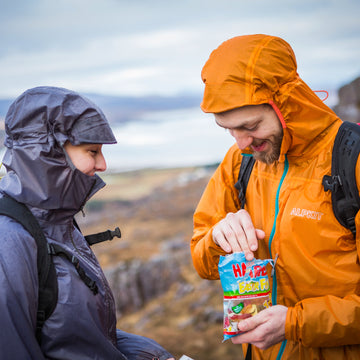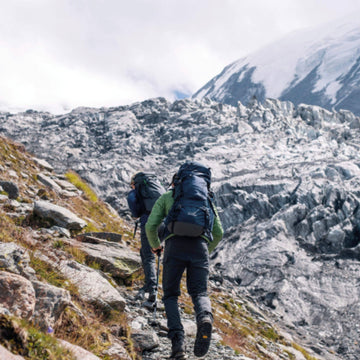
Lightweight alpine hut-to-hut travel is about precision packing. Each item in your kit is an ally, crafted to conquer summits with less weight and more adventure.
As you plan your lightweight hut-to-hut trek in the Alps, you're faced with the challenge of putting together an alpine kit list that strikes a balance between carrying essentials and keeping your pack light. Your task is to select items that are not only versatile and durable but also optimise their weight-to-functionality ratio.
A sub 45 litre sack weighing no more than 8 kg should be achievable without too much effort, but we are going to try and squeeze you down lower than that.

Embarking on your trek with the philosophy of moving fast and light, (we don't mean race around trying to beat the estimated stage times), is about freeing up your time to experience the journey. This approach is not just about minimising weight but maximising the joy of exploration, enabling you to cover more ground with less burden and take more time to stop enjoy the views or unique amenities.
How do you reduce your pack weight?
Reducing the weight you carry on an alpine hut-to-hut trek will significantly enhance your comfort and enjoyment. It starts by taking a long hard look at your pack and what you put in it. Here are some general tips to lighten your load:
-
Choose lightweight gear: Start by looking at your heaviest items and cut weight here. Don't overlook the weight of your rucksack. Technology in outdoor gear has come a long way in reducing weight without sacrificing comfort or durability.
-
Limit clothing: Take only the necessary clothing items, focusing on versatile layers that can be mixed and matched. merino wool garments are ideal as they're warm, lightweight, and don't retain odours, reducing the need for multiple changes.
-
Share common items: If trekking with others, distribute the weight of shared items like toiletries, first aid supplies, and navigation tools among the group.
-
Repackage toiletries: Instead of bringing full-sized toiletry items, repackage them into smaller containers. This not only saves weight but also space in your backpack.
-
Buy a sleeping bag liner: If your huts provide blankets all you need is a lightweight sleeping bag liner. This can significantly reduce your load.
-
Minimise electronics: Limit the number of electronic devices you take. Use your smartphone as a camera, GPS, and entertainment device to save space and weight. Alternatively tuck it away in your sack and use only for emergencies.
-
Use a water filter: Instead of carrying a day's worth of water, bring a lightweight water filter or purification tablets to treat water from safe sources along your route.
-
Ask yourself why: Before packing each item, ask yourself if it's essential. For items that are not absolutely necessary, consider leaving them behind.
-
Trail snacks: Choose high-energy, lightweight food options like energy bars, nuts, and dehydrated meals if you need to carry your food. Avoid heavy packaging and opt for calorie-dense snacks. Research what meal options exist at your mountain hut, especially if you have specific dietary requirements. I remember chicken being offered up as the veggie option in a French refuge 10 years ago, hopefully things have moved on a bit.
-
Digital maps: We always recommend carrying a compass and paper map, however digital maps on your smartphone are a convenient addition. Save the maps to your device while you have a connection and ensure you have a portable charger or power bank to keep your devices charged.
-
Walking poles: Choose lightweight, collapsible walking poles that can be easily attached to your backpack when not in use.
-
Clothing with multiple uses: Select clothing that can be layered and serve multiple purposes, such as trousers that convert to shorts or a jacket that doubles as a pillow.
Phew, that's a lot to think about, but it also shows just what an opportunity you have to shave grams, if not kilos off your pack weight. By carefully selecting and evaluating each item for its necessity and weight, you can significantly reduce the load you carry, making your trek more enjoyable. Remember, the goal is to have everything you need to be safe and comfortable, without burdening yourself with unnecessary weight.
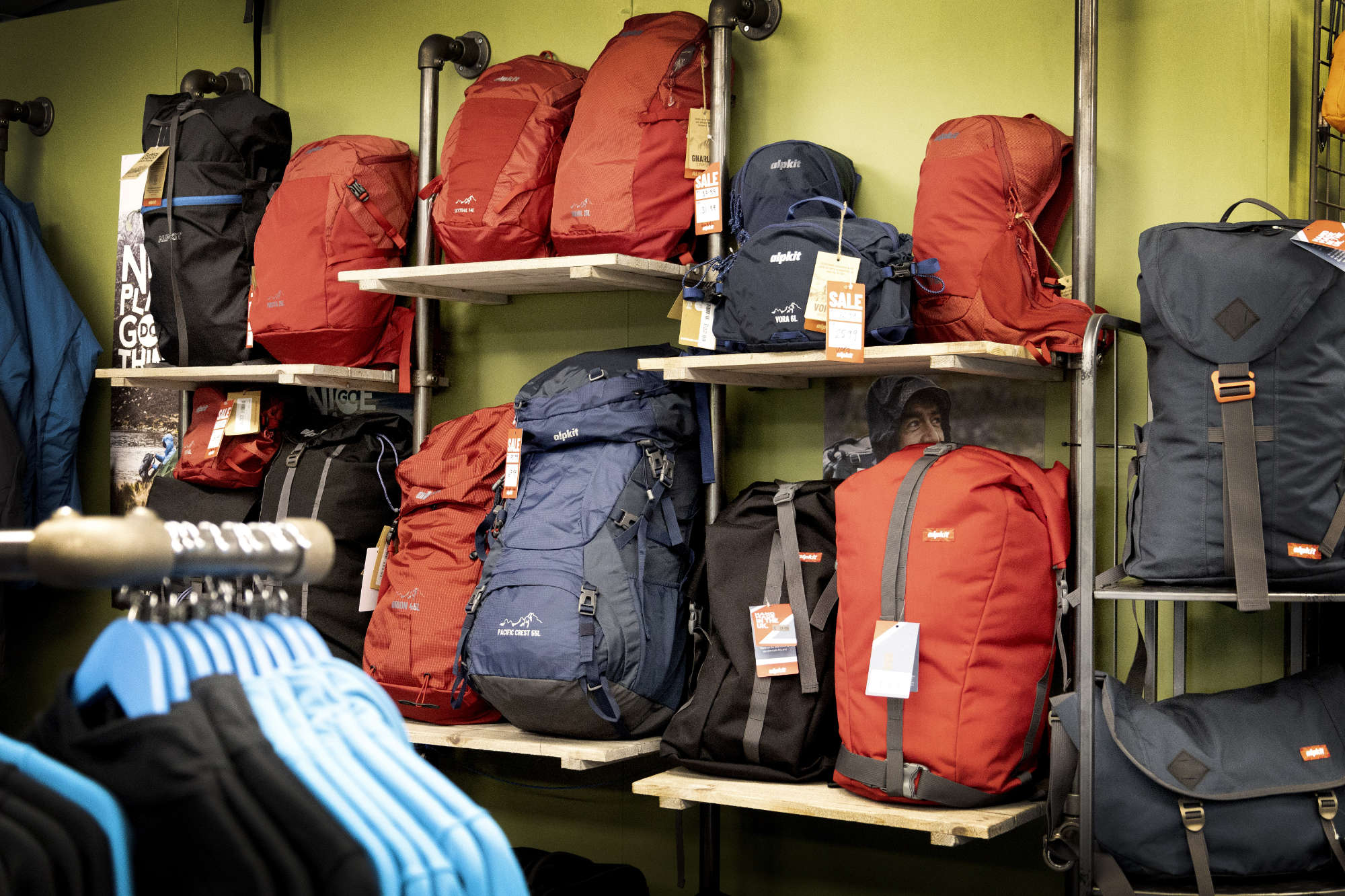
Visit a store to fine tune your pack and reduce the weight
This is why we built our retail stores; so you can come in and experience these products first hand. Pack your own rucksack in store with the kit you want to carry, and really experience what it feels like to have it on your back. Not only that, play around with trekking poles to feel how they can make you more stable.
A visit to an Alpkit store is guaranteed to make impactful changes to your trekking set up.

The Alpine trek packing list
With our research in the bag, here is an example packing list for your alpine hut-to-hut trek this spring and summer:
-
Backpack: Choose a 30-40 litre backpack that's comfortable and fits well, making sure it can accommodate all your essentials without being too bulky. Be strict with yourself, the bigger your rucksack the more you are likely to take. If we were to recommend one, we would start you off with the Ledge 35 litre hiking pack. It has plenty of pockets, straps, hydration bladder sleeve and loops for your trekking poles.
-
Clothing:
- Quick-dry base layer: Trekkers should opt for lightweight, quick-dry base layers that wick away sweat efficiently. Avoid cotton as it holds moisture and can make you cold. For a multi-day trek consider packing 3 base layers: 2 short-sleeve and 1 long-sleeve shirt. Merino wool baselayers are warm and have great odour-resistant properties, but if you are trekking in mid-summer you will appreciate the added wicking properties of our Polygiene treated synthetic baselayers.
- Insulating mid layer: A merino wool jacket or a fleece jacket is essential for keeping warm, especially during cooler mornings at higher elevations. The Milford merino wool midlayer is highly recommended for its warmth and comfort, and the Loki fleece snap-neck pullover is secretly technical with classic styling so you can sit around looking like Clint Eastwood on the rifugio balcony.
- Hiking vest: A hiking vest, like the Primaloft Sierra Vest or down Filoment Vest is surprisingly effective for maintaining core warmth in windy conditions.
- Rain jacket: You may have been sold on the photos of blue skies, but it does rain in the Alps and the storms can be awe inspiring. Always carry a rain jacket. Argonaut could be all you need to get you going, but if you are looking for something a bit more refined try the Sigma or Balance jacket, known for its effectiveness in prolonged rain.
- Insulated jacket: A lightweight down or synthetic jacket provides additional insulation and warmth both on the trail and in the huts.
- Hiking trousers: For comfort and flexibility, the Chilkoot softshell walking trousers or Teleki trousers are excellent choices, offering breathability with windproof and quick drying properties.
- Merino Wool Hiking Socks: A well fitting pair of socks helps you avoid blisters and keep your feet warm and dry. Trekkers mid-weight walking socks are really versatile and dry quickly at whatever altitude you are trekking.
-
Footwear: Durable, well fitting hiking boots with good ankle support are essential. This doesn't mean they have to be heavy, watch this space.
-
Sleeping gear: Reap the rewards of staying in a hut by leaving your sleeping bag at home! Most huts just require a sleeping bag liner for liner for hygiene in the huts. It is amazing what a difference this makes to you pack weight and capacity.
-
Headlamp: The days may be getting longer but you should always carry a headtorch and some spare batteries. LED headtorches are compact, powerful and only weigh around 100 grams.
-
Personal items: Minimise your toiletries to the essentials. This includes sunscreen, lip balm, and a first-aid kit.
-
Navigation tools: Carry a map, compass, and GPS device or smartphone with a hiking app.
-
Food and water: Pack lightweight, high-energy food for snacking between huts. Carry a water purification system if you will be needing to refill you water en-route. Many trails will have springs that run in all but the driest seasons.
-
Sunglasses and sunscreen: High-altitude UV protection is crucial. Take sunscreen with a high SPF and sunglasses with high UV protection.
-
Walking poles: Trekking poles help reduce strain and improve balance when wearing a rucksack. Make sure your rucksack has straps for stowing your poles when they are not needed.
-
Pouches for cash and documents: Leave your heavy wallet at home. Keep your valuables safe and easy to find with lightweight nylon travel pouches.
-
Camera or smartphone: The quality of your phone camera has come along way in recent years. You no longer need to carry the extra weight of a bulky SLR to capture your memories. Be ruthless with turning off phone services you do not need to conserve battery life and carry a small powerpack if you are relying on it.
-
Small towel and swimwear: You know we like a bit of wild swimming. Alpine lakes and streams provide a refreshing break from the hot dusty trail. Dual purpose swim/hike shorts will save you a few grams Swim safely, meltwater is very cold and you will be a long way from assistance should you need it.
Tailor your pack based on the trek's duration, the weather forecast, and personal needs. Enjoy your adventure, there is nothing quite like watching the sun set from your mountain balcony.

